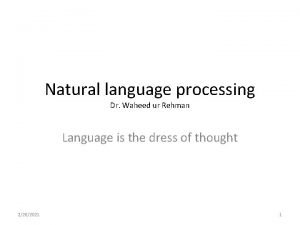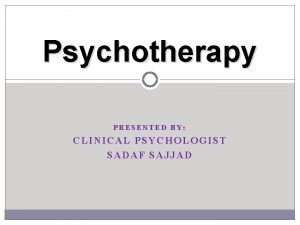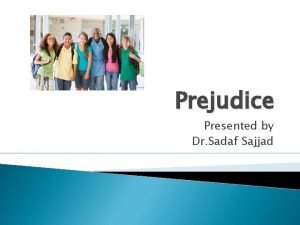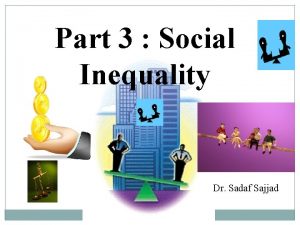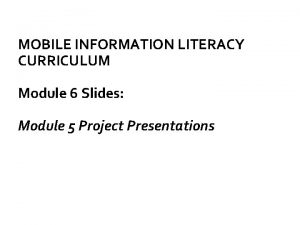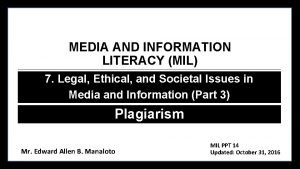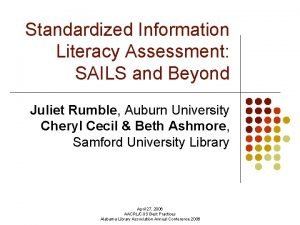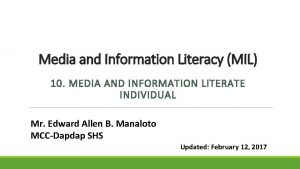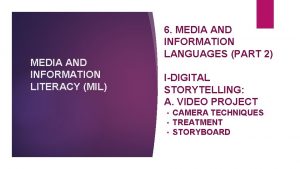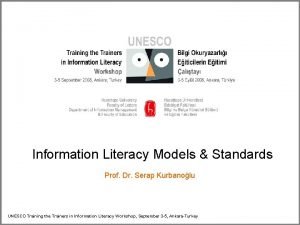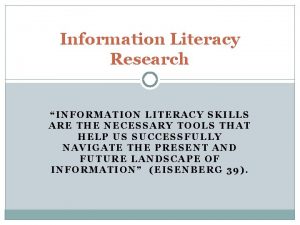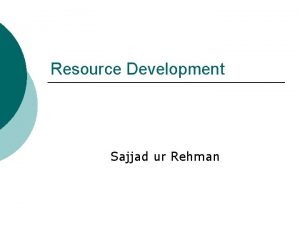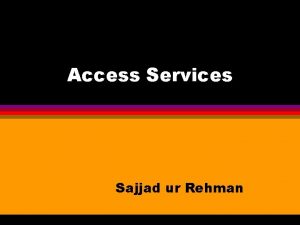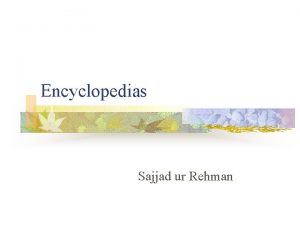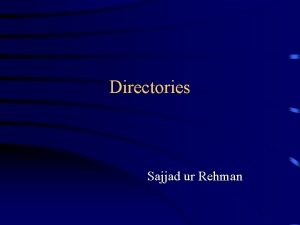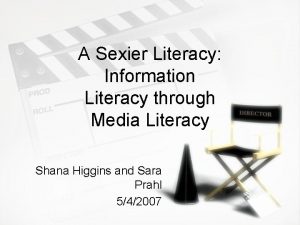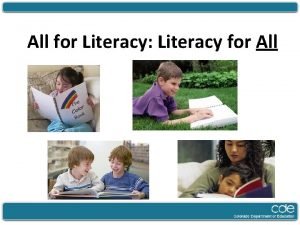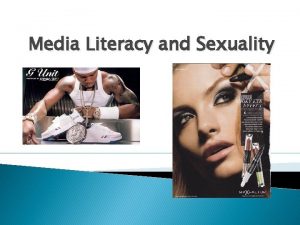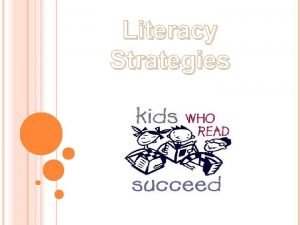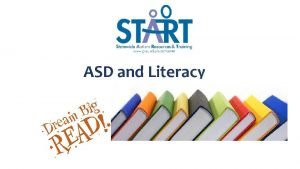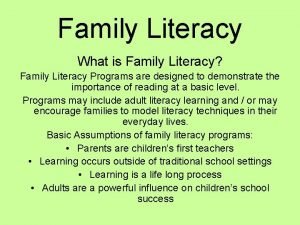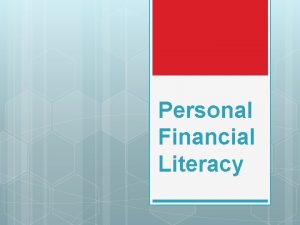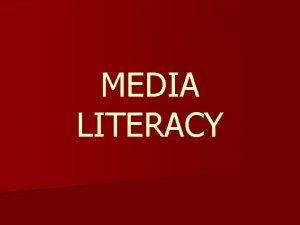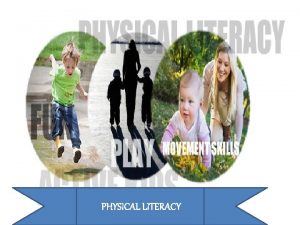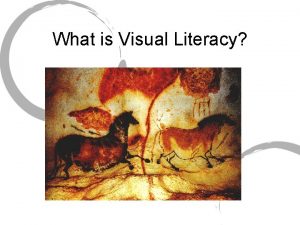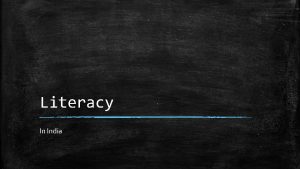Information Literacy Sajjad ur Rehman What Is Information





















- Slides: 21

Information Literacy Sajjad ur Rehman

What Is Information Literacy? • Empowering individuals in becoming self-reliant information users • Developing skills and attitudes for lifelong use, consumption and application of information

Terminology and Variations • • • Information literacy Computer literacy Library and information skills Orientation Bibliographic instruction User education

Information Literates • In order for a person to be information literate, one must be able to recognize when information is needed and should have the ability to locate, evaluate, and use the needed information effectively. • Information literates are those who have learned how to learn, as they know how information is organized, found, located, used and applied in personal, professional, and other areas.

Why? • Users have time pressures and other constraints • Focus on cost effectiveness • Specialized needs of users • Need of sophisticated users for independence (contd. )

Why User Education? • Focus on personalized use in certain environments • Changes in information resources and services and information technologies

Activities • Levels of needs and related programs: – – – Orientation activities Organized tours Special purpose training programs Credit and non-credit courses for beginners Advanced bibliographic resource courses Computer-assisted instruction • Help features • Web-based applications

Considerations • • • Untraditional One-to-one basis Focused Emphasis on cost effectiveness Constraints of human resources

Orientation Welcoming and introducing actual and potential users to the set-up, resources, services, physical layout, organization of materials, specialized resources and services

Content of Orientation • Varies from setting to setting • Important areas – Resources – Services – Basic rules and regulations – Access mechanics: locating items, ILL/DD – Physical setup – Special collections

Exposure to Specialized Resources (1) • In-house resources – Technical reports – Documents – Archives – Specialized reports • Patents and standards

Exposure to Specialized Resources (2) • Electronic resources in different formats • Internet as a resource • Special databases – In-house – External

Exposure to Specialized Services • Use of portals for searching OPACs and databases • Use of networked information resources through LAN • Use of telecommunication utilities • Use of Internet • Use of CAS • Use of DD Services • Use of other specialized services

Methods • • Lectures/presentations Demonstrations Use of portals Computer assisted instruction Case studies Involvement in projects Use of electronic bulletin boards and similar means

Information Literacy Program • Needs Assessment – external – Internal • Formulation of goals and objectives – General – Terminal – Enabling

Information Literacy Program • Planning – Devising, evaluating and testing – Choosing methods and materials – Developing materials – Staffing – Management and conduct – Evaluation

Information Literacy Program • Client-Centered Program – – – Collaboration with the teacher Reviewing available resources Working out objectives Analysis of the background of clients Instructional possibilities and interventions by the teacher – Developing program – Evaluating program

Developing Instructional Materials • Teaching aids, handouts, exercises, Web materials • Criteria – readability, simplicity, brevity, accuracy, attractiveness. consistency, flexibility, suitability, cost-effectiveness, ease of use • Slides • Videos • Portals/websites

Integrated Courses • Working with instructors • Providing instruction which is related to project or term paper • Instruction on searching and use of information • Combined grading

Independent courses • Required or elective courses • Combination of computer and information literacy and library skills • Needed resources – faculty – laboratories – instructional aids

Advanced Bibliographic Courses • • Uncommon in academic institutions Meant for graduate students Taught by subject specialists Content covering subject structure, bibliographic tools, searching, documentation, etc.
 Media and information literacy ppt
Media and information literacy ppt People in media or people as media
People in media or people as media Media literacy and information literacy venn diagram
Media literacy and information literacy venn diagram Dr waheed rehman
Dr waheed rehman Tahira rehman
Tahira rehman Abdul rahman chughtai
Abdul rahman chughtai Fasih ur rehman
Fasih ur rehman Ben rehman
Ben rehman Smurf attack definition
Smurf attack definition Bodock seal
Bodock seal Sadaf sajjad
Sadaf sajjad Sajjad urban dictionary
Sajjad urban dictionary Instrumental aggression
Instrumental aggression Cyber literacy for the digital age
Cyber literacy for the digital age Media and information literacy module 6
Media and information literacy module 6 The forgotten footnote plagiarism
The forgotten footnote plagiarism Sails information literacy
Sails information literacy Principles of information systems, seventh edition
Principles of information systems, seventh edition Media and information literacy graphic organizer
Media and information literacy graphic organizer Storyboard about media and information literacy
Storyboard about media and information literacy Anziil
Anziil Big six information literacy skills
Big six information literacy skills



